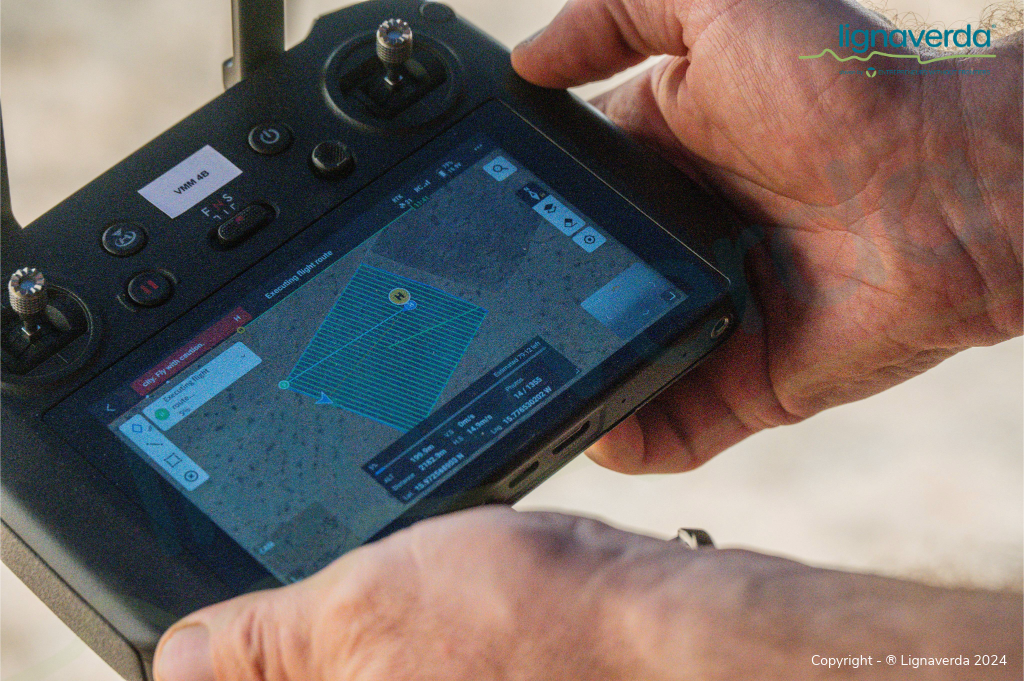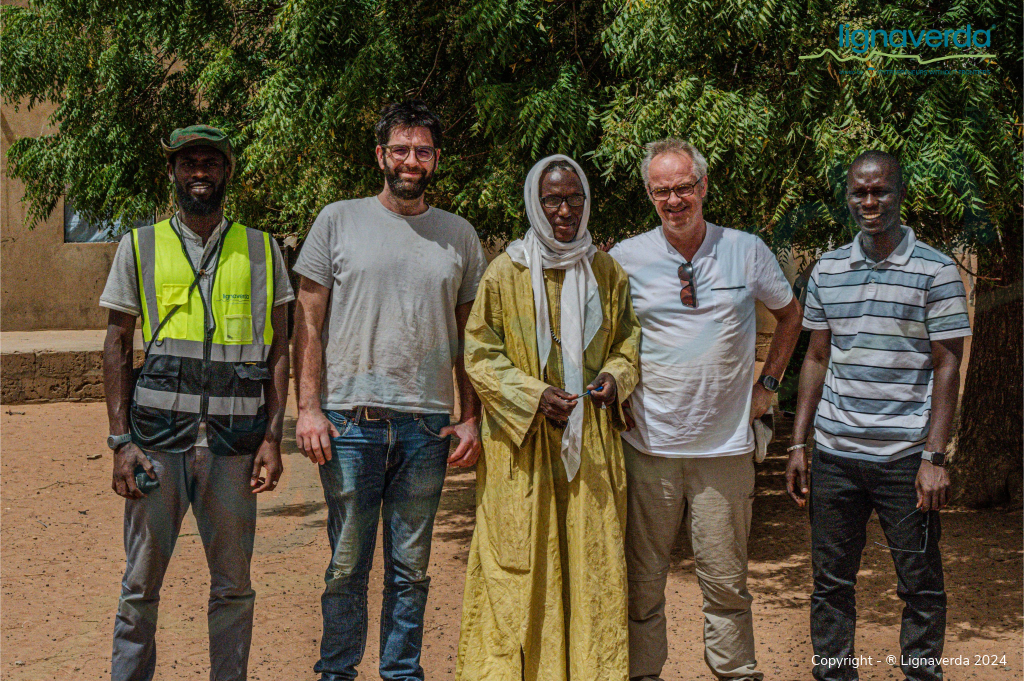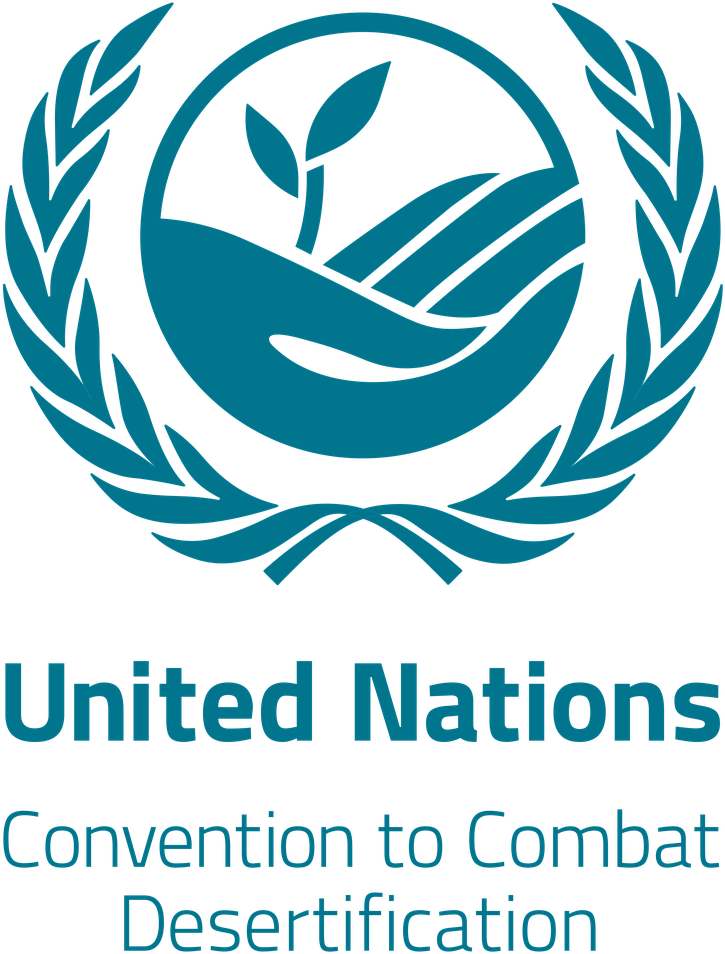Ploughing progress in Mboula
In the third week of April, during an unusually early and scorching heatwave accompanied by dust storms, Werner Sels (General Director) and Wouter Vanhove (Operational Director) visited Lignaverda’s ongoing reforestation projects in the Louga Region of Senegal. They were joined by the Senegalese Lignaverda team – Farba Gaye, Saïdou Ba, Bineta Kamara, Yaya Barry, and Djibby Cheikh Sow – as well as Ben Serrure, a reporter from De Tijd newspaper, photographer Daan Degroote, and drone pilot Seppe Koop from Argusvision.
The trip included an evaluation of the ongoing ploughing activities on five 200-hectare sites in the Mboula community. With over 800 hectares already ploughed in Mboula, efforts will soon shift to three plots in the Syer community that will be reforested this year: Kalom (600 hectares), Nassy (240 hectares), and Bokkinedo (300 hectares).
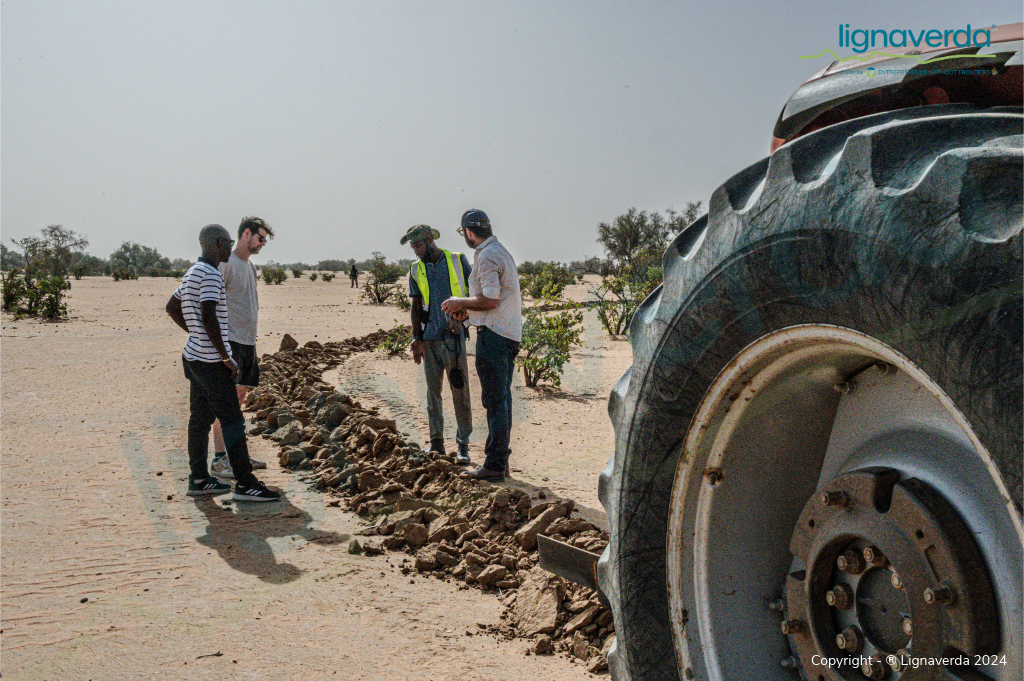
Commitment to Community Engagement
Community engagement is crucial to the success of Lignaverda’s reforestation projects. Our Senegalese team has held multiple gatherings with village chiefs and community mayors to gain support for the reforestation activities and to co-design the precise location and shape of the reforestation sites, as well as the species to be planted. To further strengthen our relationship with the participating communities, the Belgian team visited the villages of Bisnaabé, Bokkinedo, Belli Djowdi, and Kalom in the Syer community, as well as Kodiolal in the Mboula community. We were warmly welcomed by the village chiefs and discussed with the local population their concerns and expectations for this year’s reforestation activities. The enthusiasm of the communities was palpable. However, several questions were raised, such as the selection of participants for seed collection and sowing activities. One livestock herder urged for the quick fencing of the plot in Kodiolal to prevent livestock from injuring themselves in the ploughed furrows. We take these concerns seriously and will strive to protect the plots (and the livestock) as soon as possible.
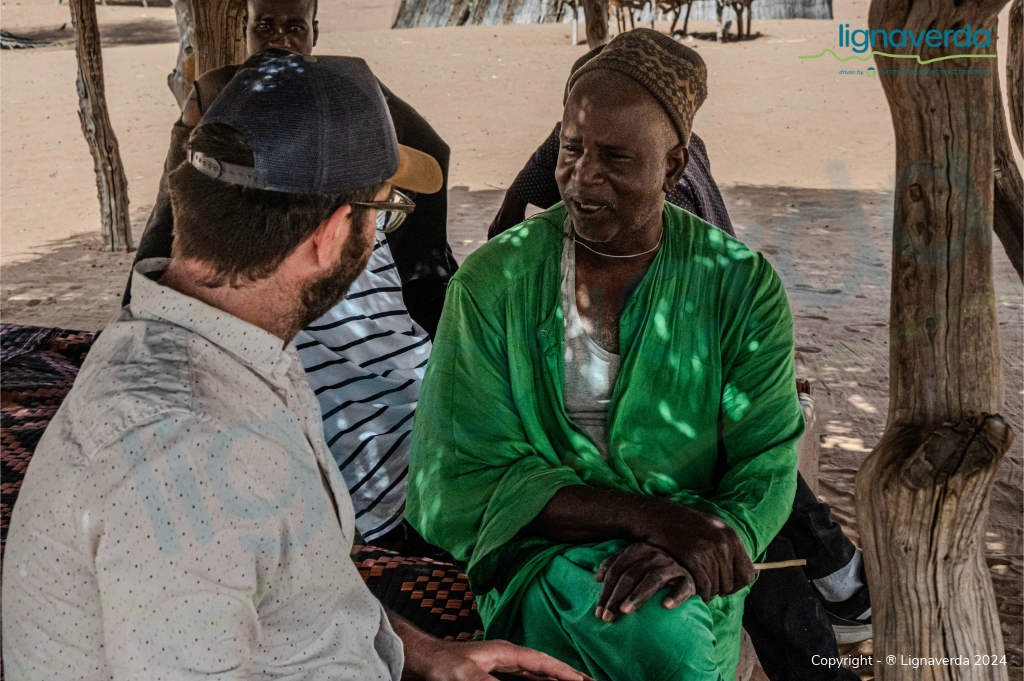
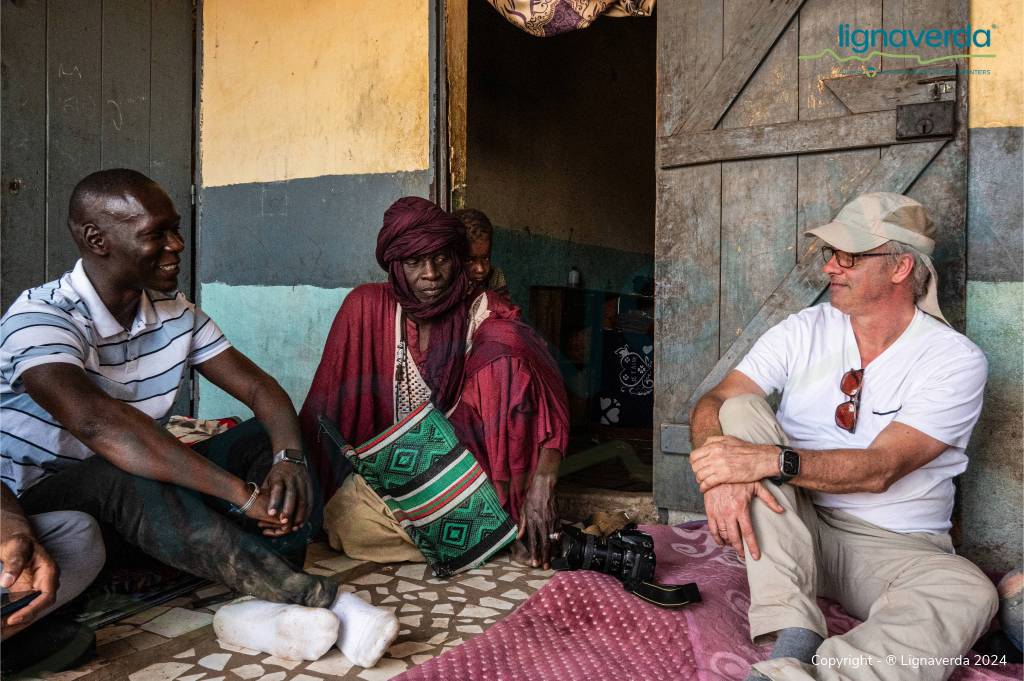
Socio-Economic Projects
As 2024 marks the start of Lignaverda’s socio-economic support projects, we visited the site of Diéry in the Syer community, where – with support from Entrepreneurs for Entrepreneurs (OvO) – a 1-hectare horticultural garden will be established. The garden will be irrigated using water from an underground pipeline connecting the borehole of Mbar Toubab with the surrounding villages. Water will be stored in four 1-cubic meter concrete tanks dug into the ground. Villagers will use watering cans to manually irrigate crops such as beans, tomatoes, onions, cabbages, and eggplants, which will be planted in the coming weeks.
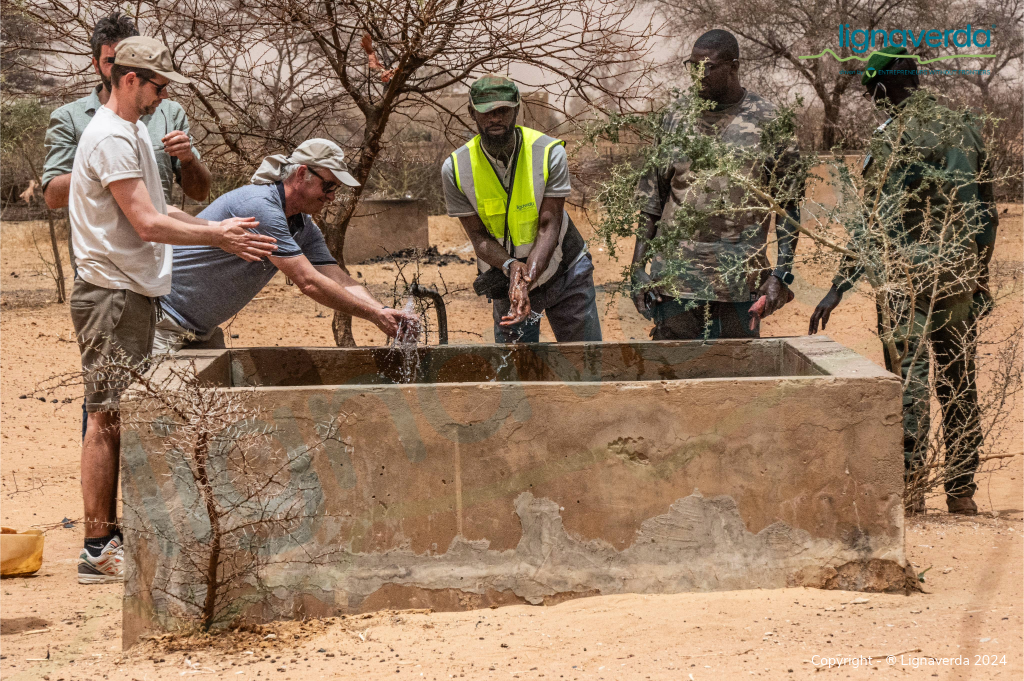
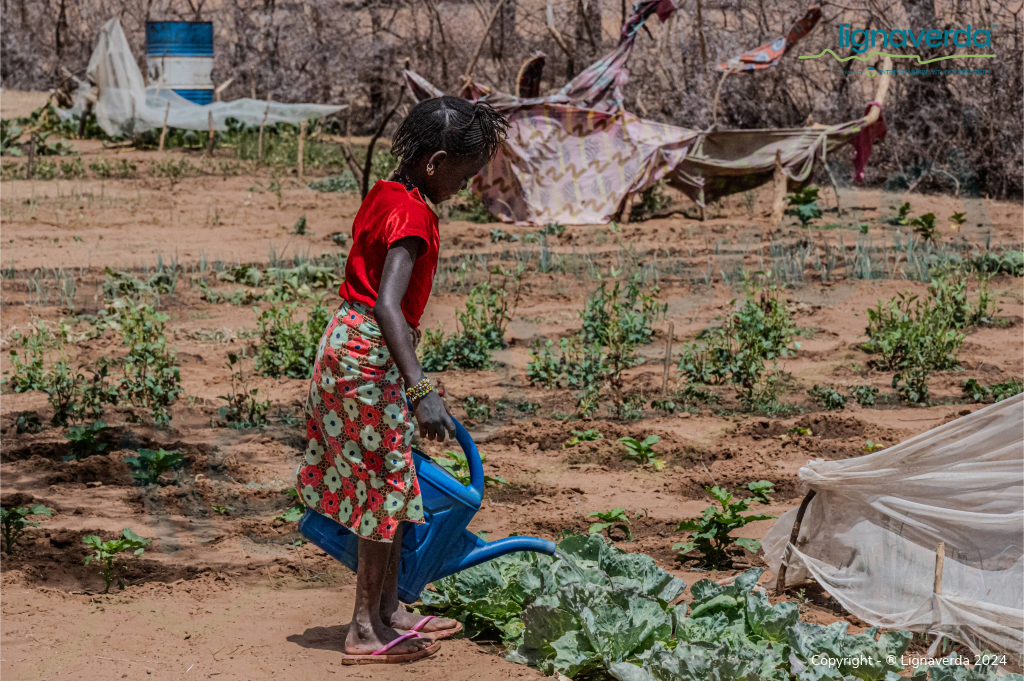
Improving Evaluation Methods to Foster Transparency
A significant part of our field trip was dedicated to improving the evaluation method for our reforestation success rates. Once the trees mature, satellite imagery will provide reliable estimates of the accumulated biomass and thus the carbon captured by the new trees. In the meantime, we aim to transparently report the survival rate of young seedlings during the first five years after sowing, when the trees are still too small to be detected by satellites.
During our trip, Argusvision mapped the elevation of the 500-hectare Mbar Toubab plot, reforested in 2021. In the following days, drone pilot Seppe returned to create high-resolution maps at just 18 meters above the ground. Later, artificial intelligence tools will be used to analyse these images and identify the presence of small trees. It is thereby crucial to distinguish between the trees we have planted and the pre-existing shrubs, grasses, and old trees. Accurate tree density estimates will allow us to replant areas with fewer than the ideal density of 300 trees per hectare, ensuring we maximize the carbon and biodiversity potential of our plots.

